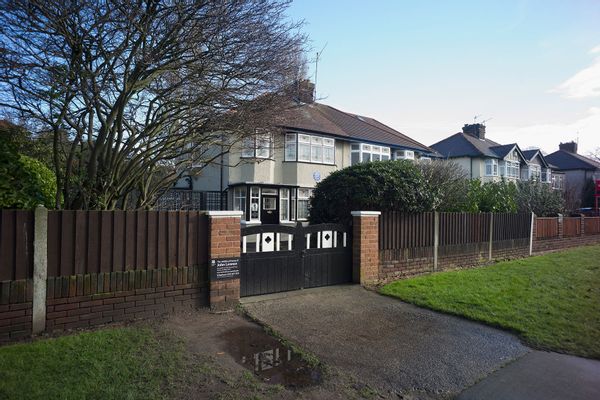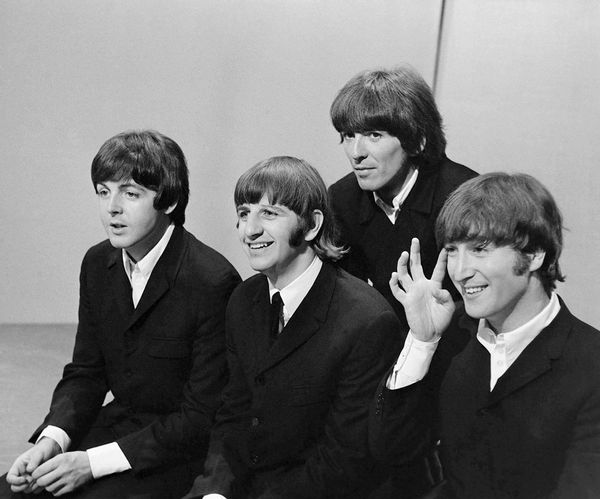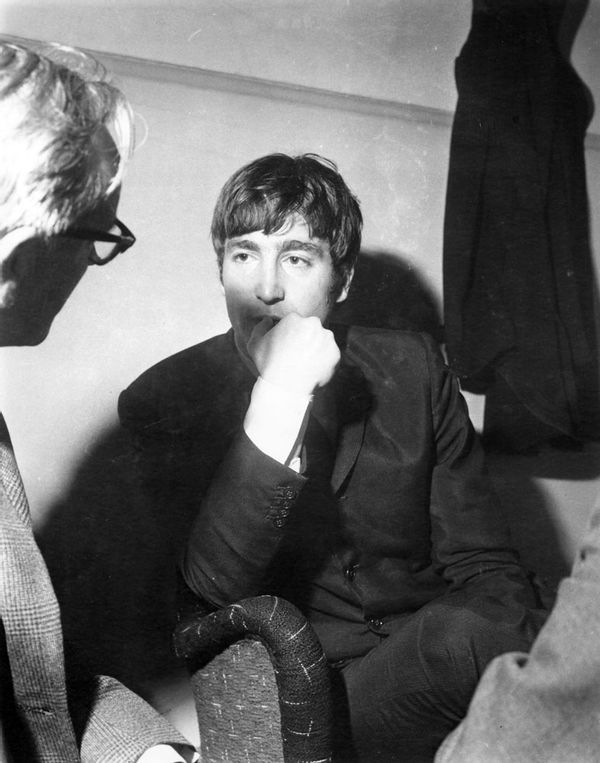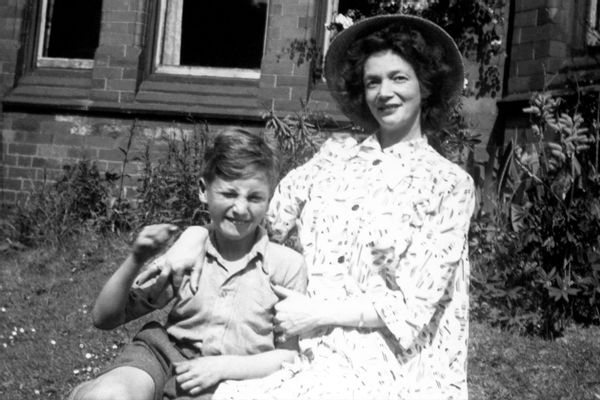
As I began researching for my book, "Understanding John Lennon," I discovered that the story for the Beatles' "Strawberry Fields Forever" was not as most people originally thought. The popular story told is about a girls' orphanage with that name, but the true inspiration was to be found elsewhere – within a breakout at a juvenile hall during a dark time in the artist's childhood.
In David Sheff's "The Playboy Interviews with John Lennon & Yoko Ono," John Lennon himself revealed that there were two famous houses where he lived:
One was owned by Gladstone: a reformatory for boys, which I could see out my window, and Strawberry Field, just around the corner from that, [which was] an old Victorian house converted for Salvation Army orphans.
Strawberry Field (pictured above) was a mansion built in 1870 and was owned by a wealthy shipping magnate. It was sold on, and in 1936 the Salvation Army opened a home for young girls. While that orphanage may have inspired the title, the song "Strawberry Fields Forever," however, was set in John's childhood, during his time at the Mendips, the house he shared with his Aunt Mimi for 15 years. This has been misunderstood and covered up, and the full background and meaning of the song have never been questioned. On many occasions, John, and especially John's Aunt Mimi, have painted a picture of an idyllic past, while at other times the degree of John's unhappiness as a child has surfaced.
Near Strawberry Field was the Gladstone merchant's mansion, named Woolton Vale, later to become Woolton Vale Remand Home, about which John's cousin Stanley declared that "the bad boys' borstal intrigued us." This reformatory housed youngsters who had been convicted of theft, truancy or ill-disciplined – the types of children whose parents didn't want to know, outcasts. It's not too hard to imagine young John gazing out from behind his bedroom curtains and catching sight of one of these unhappy, unloved and rejected children staring back from a barred window frame. In his 15 years at Mendips, John would have likely caught sight of boys leaving or entering the building, in their regulation coarse brown uniforms accompanied by a member of staff, youth officer or even a policeman.
On December 29, 1965, a breakout by a group of boys occurred at the Woolton Vale Remand Home that made headlines in all of the local papers, such as the Liverpool Echo. Given the close proximity of Gladstone Hall to Mendips the novelty of this news would, no doubt, be passed to John from friends in Liverpool. Months after this news filtered down to him and while John began filming "How I Won the War," he began work on "Strawberry Fields Forever." When the body of the work was completed, all that was missing was . . . the title. The lyrics themselves mentioned no setting, imaginary or otherwise.

There was no mention of "Strawberry Field," spoken or otherwise on the demo – and this is after just two months since the idea for the song was conceived.
Later in his home music demos of the song, John used "It's Not too Bad" as the working title for the song. Almost half the songs that came to the Abbey Road recording studio had working titles, and the vast majority of these songs found their finished title within the body of the lyrics. For example, the song with the working title "Seventeen" became "I Saw Her Standing There," and "Hello, Hello" became "Hello Goodbye." Some songs had working titles that were "alien" to the lyrics. For example, "That's a Nice Hat" was the working title for "It's Only Love," and "Bad Finger Boogie" was the working title for what would later be "With a Little Help From my Friends."
John's demos put the emphasis on the line, "It's not too bad," as if this were to be the title of the song. However, unlike the other Beatles songs that eventually found their official titles in the lyrics, there was no mention of "Strawberry Field," spoken or otherwise on the demo – and this is after just two months since the idea for the song was conceived. So, it is fair to assume that the lyrics John came up with when he was in Almería, Spain shooting "How I Won the War," were not connected to Strawberry Fields at all, but instead were influenced by somewhere else . . . Gladstone Hall.
Meanwhile, The Beatles were slipping away from John. The release of "A Hard Day's Night" saw John taking the lead vocal solo six times. Taking into account John and Paul McCartney's joint efforts, a rough estimate of John's music on the album was 19 minutes out of an album time of 30 minutes. With "Revolver" John had five lead vocals with 13 minutes of his music on an album of 33 minutes, and with "Sgt. Pepper" John would provide lead vocal on four songs and clock up a measly 10 minutes of his time on an album that ran for 40 minutes. John's crown was slipping and he knew it; the period of "It's Not too Bad"/ "Strawberry Fields" was one of full-tilt deep introspection.
Paul's studio technical efficiency was there for all to see, grounding itself in "Revolver" and given full bloom in "Sgt. Pepper." And although "It's Not Too Bad" was a precursor to this notion of childhood, it could well have given John an insight into using the location of Strawberry Field as a cover for the meaning to the lyrics' real origin. The initial and brief concept for "Sgt Pepper" about children growing up, discussed by John and Paul, gave John a way out of explaining the lyrics to "It's Not too Bad." Now he cast his mind around towards "selling" the deeply personal yet ambiguous lyrics of "It's Not too Bad" and did so by tagging on a chorus surrounding a vague notion of the girls' home. When listening to the lyrics we see the chorus is fairly straightforward. "Nothing is real" is again a nod by John to confusion, which is fairly easy to understand, as to the line, "Nothing to get hung about," let's not get upset?

If we omit the choruses of "Strawberry Fields Forever" and examine the original body of 12 lines and factor into account the corrosive effect of Mimi, reflected by her lack of love and constant criticism of John, this proved to have a painful and lasting effect on his childhood and adult life, the interpretation of the line, "Living is easy with eyes closed," is revealed in John's explanation of the lyric in "Ray Connolly Beatles Archive": "It was pretty straightforward. It's about me and I was having a hard time." John tells us that, contrary to the previously portrayed idyllic childhood. After all the years since his childhood and the fame, fortune and fan worship, now, years later, John is telling us that he still remembers that part of his life and that it is important that he can instantly recall this childhood memory, such is the impact and remaining pain he feels and is recalled now into public view.
At times, the party line of the cherished childhood is broken as John said in Jan Wenner's famous "Rolling Stone" interview: "When you're a child you can only take so much pain." Some of the lyrics have a meaning known only to John. With other lyrics, we can give an educated guess, such as "Misunderstanding all you see," could well be a reference and an allusion to one of John's early literary influences, Lewis Carroll's "Alice in Wonderland" and "Imagination is the only weapon in the war with reality."
The main body of lyrics is a challenge to the listener without an understanding of the painful and deeply damaging time in Mendips.
It is unclear why John would tag on a Salvation Army Orphanage, in the shape of Strawberry Field, while the physical, concrete aspects – the orphanage and the orphans – are ignored in the song. Whereas the double A side of "Strawberry Fields Forever," Paul's "Penny Lane" is full of movement and images. In "Penny Lane," Paul gives us a barber's shop that shows photographs, a banker driving a car, little children who laugh at the banker, a fireman, a portrait of the Queen, heavy petting, a clean fire engine, a pretty nurse, the selling of poppies, a bus shelter, a barber shaving a customer, a fireman rushing about, the rain pouring and all this beneath the blue suburban sky. This is the evocative imagery of childhood. John gives us a care home, but no orphans or children, no hustle and bustle of children at the orphanage's annual fair, the brass band, playing games, children running around having fun in the summer sunshine – nothing, just a building that we are invited down to visit.

John explained to Sheff, "No one I think is in my tree," is a pointer towards "Nobody seems to be as hip as me," followed up with, "I must be crazy or a genius. It's that same problem I had when I was five." Two things seem to be taking place here. Firstly, since the breakup of The Beatles 10 years before that quote, John was reinventing himself and still in major competition with Paul, and is therefore trying, in a subtle way, to say, "Look you can see I'm not crazy, so I must be a genius." Secondly, at the time of this quote, the concealment of the true inspiration for "Strawberry Fields Forever" had lasted over a decade, and John was happy for this to continue. The sleight of hand, vagueness of leaving out the physical side of the orphanage or those contained within its walls were kept deliberately "out of reach" for the simple reason that the lyrics were not focused on orphanages or those in their care.
The main body of lyrics is a challenge to the listener without an understanding of the painful and deeply damaging time in Mendips, along with the sudden and tragic loss of his mother, with whom as a teenager John had rekindled a strong relationship through his visits and staying over. So why didn't John reveal the true inspiration for "Strawberry Fields Forever"? To make a declaration that the song was about a reform home for boys would have brought up questions that John didn't want to answer, questions regarding the regime at Mendips.
The main belief has been that John's unhappiness stems from his being "deserted" by his father and abandoned by his mother, but this unhappiness goes much further. Few had an insight into John's life at Mendips with Mimi, but John's wife Cynthia, did and in "Lennon" said:
[Mimi] loved to fuel the image of the stern but a loving aunt who provided the secure backdrop to John's success. . . . She battered away at John's self-confidence and left him angry and hurt . . . and humiliated .
In David Bedford's "Liddypool: The Birthplace of The Beatles," John's half-sister Julia Baird commented that Mimi was a "hypocrite to the core." While Paul McCartney said in Barry Miles' "Many Years from Now," "She was the kind of woman who would put you down with the glint of an eye."

In public, John's mother Julia, and especially his father Freddie, became the fall guys, the cover-up of the destructiveness of living with Mimi. Why? Because if John was to give a full insight into the distress and hurt that fueled "Strawberry Fields Forever," this, in turn, could well lead to a possible disclosure as to his dependency on Mimi, who had put a roof over his head, put food on the table, paid for his fees in art college and, up until he turned 21, gave him pocket money. How could he make it known that the opinionated, wise-cracking, witty rock 'n' roll rebel he portrayed had developed out of the passive acceptance of the regime at Mendips? His single-mindedness, determination and resulting mental anguish to finding fame and fortune in return for an escape from Mendips turned out to be a poisoned chalice. It was the callousness and mental torment that John had been schooled into accepting.
The non-stop rain of soul-destroying remarks had their effect and John would later give an insight into his poor mental health, recalling his depression and thoughts of suicide. John opened up to Jan Wenner, saying, "Some people cannot see that their parents are still torturing them even when they are in their 40s and 50s." He gives further insight into the song's real meaning saying it was "psychoanalysis set to music really" in "Anthology." Considering how psychoanalysis is seen as a therapy to release repressed emotions and experiences, where do summer fairs and the Salvation Army fit in? John further revealed in "Rolling Stone," "You don't want to do with people you can't stand, the people you hated when you were 10." The question that immediately jumps to mind is: whom did John hate at the age of 10?
"Strawberry Fields Forever" reflects a dream of a young boy's escape. It was an iceberg. On top a whimsical salve of idealistic times, of an image of contented and cared-for orphaned girls and summer fairs. But below the waterline, as in Gladstone Hall lies a collection of casualties, of dysfunctional families, unwanted, unloved and neglected children contained within barred windows and locked doors, with no escape. They survived in their dreams in their imagination. And along the road, a stone's throw away another child living in a loveless environment, also using his imagination to escape, supported with his poetry, writing and storybooks. Woolton Vale Remand Home and "It's Not too Bad" was the pearl in the oyster, and "Strawberry Field Forever" was its shell. This cannot be in any doubt. Fifteen years after the song's conception he reveals to Sheff: "My influences are tremendous, from Lewis Carroll to Oscar Wilde to tough little kids that used to live near me who ended up in prison and things like that . . ."







